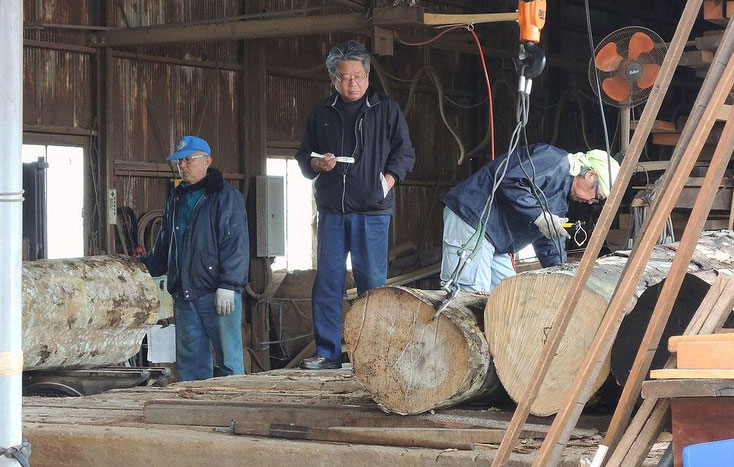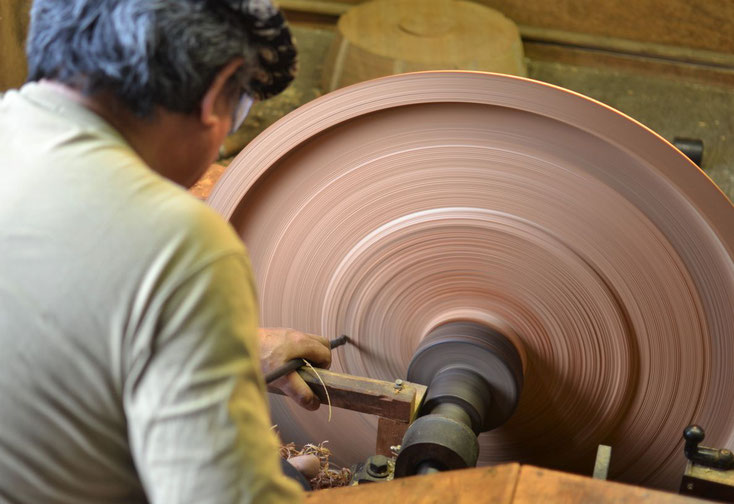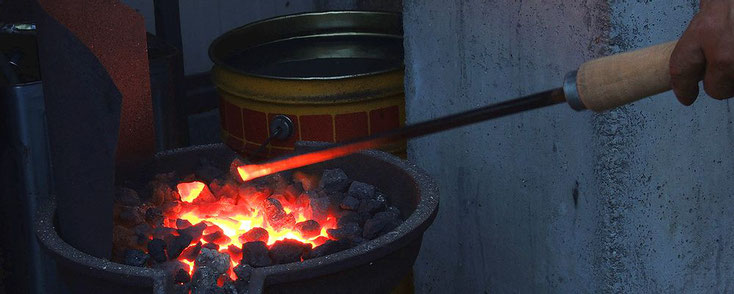How to make Lacquerware
1-1. Making the wooden base–Wood supply store
Before going to the wood supply store

Making the wood base for lacquerware starts from obtaining materials.
We have to purchase wood to make a wooden base; however, we must know how much of what we will make before heading to the store.
Since the wood supply store cuts the wood according to the thickness we order, we have to decide what to make in advance. Therefore, it takes about six months to one year before we actually purchase the woods to make a plan and arrange the schedule to make works.
Milling

The wood supply store will find what you want according to your requests. However, it may take a while to put it in stock since the store cannot predict what nature will provide, and thus, needs to search different markets to find the best suitable ones.
When milling the wood, we attend to arrange the details with the list of the planned works in hand. In the workshop filled with high-pitch bandsaw sounds, the wood is cut into pieces by the skilled hands of the staff.
The cut pieces are delivered to the studio on the next day.
1-2. Making the wooden base–Studio



Since the wood will crack and break if left out too long, the delivered wood is cut into the size of works. A piece of wood will then be roughly shaped, dried, and smoothed.
Since wood is an organic material, it requires careful handling. If it is not dried well enough, the shape may change later on. Depending on the size and thickness of the work, this process requires six months to a few years.

During this process, the wood piece will be turned on the wheel twice. In the first arabiki rough turning, the wood is still soft, and the water contained in the wood may disperse while shaping. However, in the second finishing process, the wood is already hard, which requires more careful work.

A plane attached to the top of a stick acts as a tool that shaves wood on the turner. I make my own by processing high-speed steel. It is as if becoming a blacksmith, as I burn cokes and forge the steel with a hammer while observing the color (the temperature of the fire).

2. Applying lacquer

Once the wooden base is ready, the next step is lacquer coating. The coating process requires repeating the coating and polishing process more than ten times from making the foundational layer to finishing.
This object that appears to be a shelf is called a furo bath and is used to dry lacquer.
Every time the lacquer is applied, the work is placed in the furo bath to be dried. Since lacquer dries better in high temperature and high humidity, we need to add extra humidity during the dry winter season. Although it may sound odd, “drying” in lacquer refers to a chemical process of hardening the lacquer component.

History of lacquerware in Japan
The history of lacquerware began a long time ago in Japan. A lacquer coated accessory was found in the Karinoshima ruins in Hakodate, and it was proved to be the world’s oldest lacquer craft from approximately 9,000 years ago.
In May 2014, Saitama City government announced that the oldest Japanese lacquer tree was found in the Minami Konuma ruins from the mid-Jomon Period (approximately 4,900 years ago). The tree had nine straight cuts on the bark, which is believed to have been made with a stone tool to collect lacquer.
Additionally, clay vessels used to store lacquer, unfinished lacquerware, lacquer-coated comb and bow were found from the same site, which shows that the area was used to grow lacquer trees to collect lacquer to make lacquerware.



